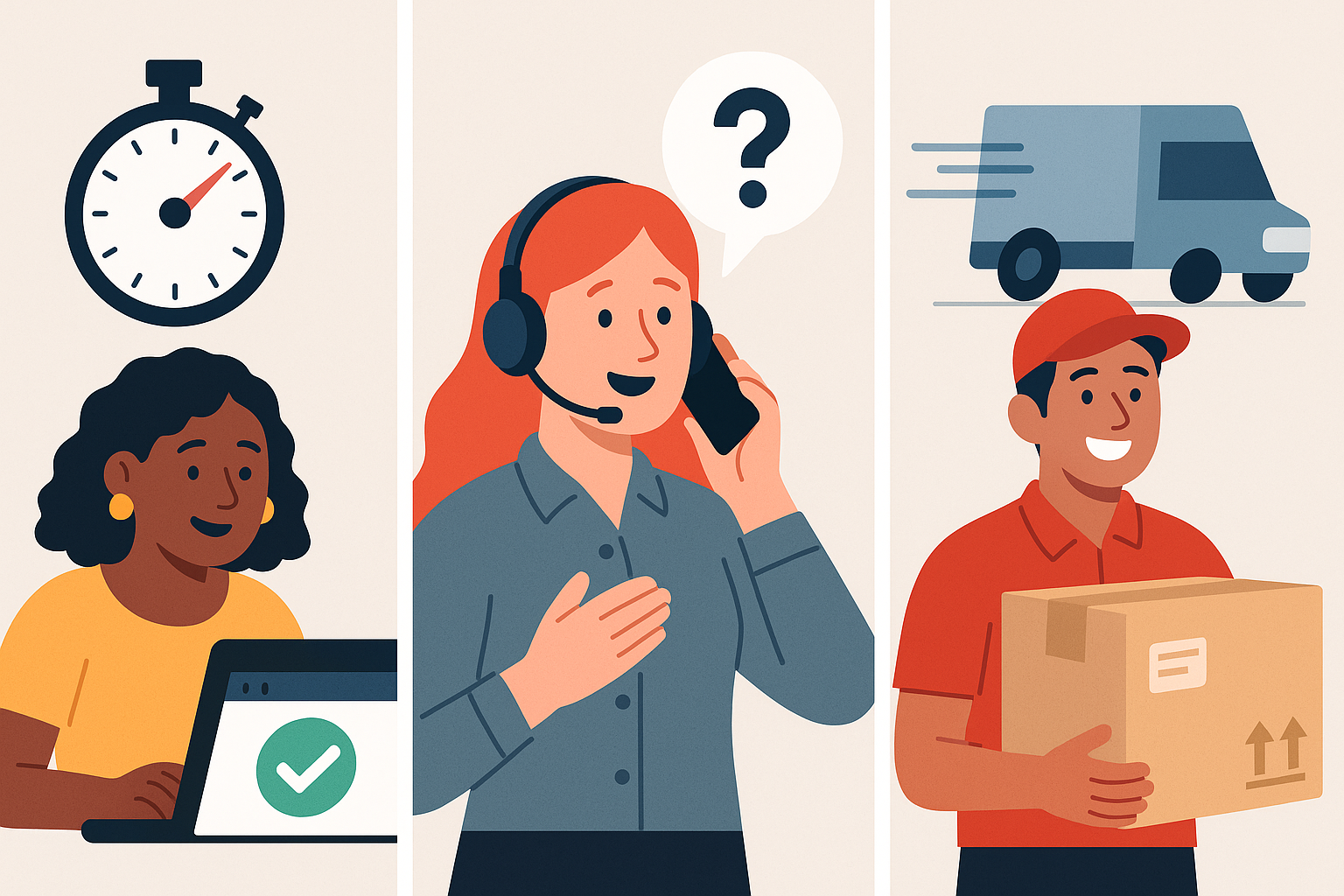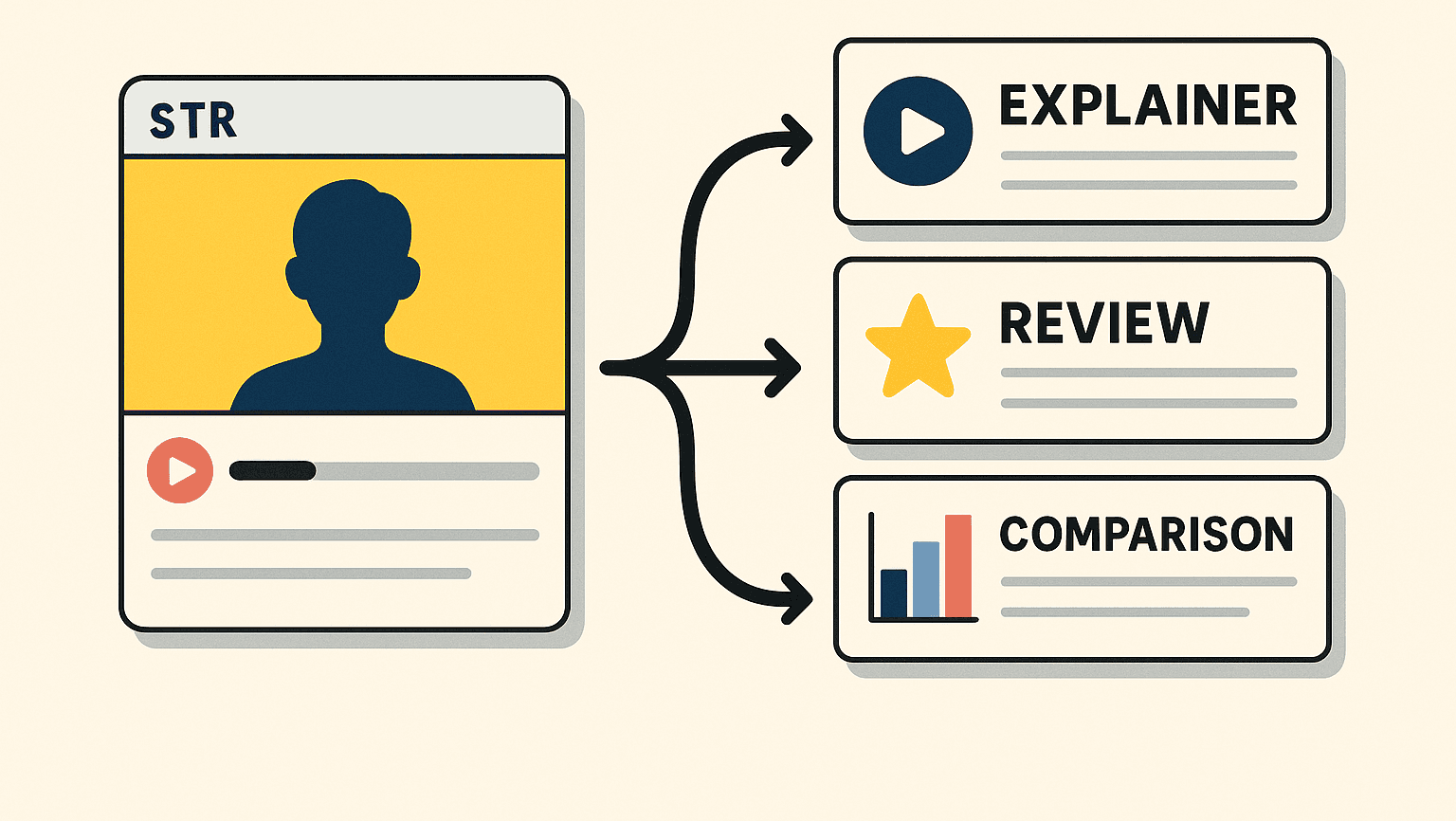Speed Is a Feature: Site, Support, and Delivery That Convert

TL;DR
- Slow loses sales. Latency and unclear delivery kill intent faster than any competitor.
- Support clarity converts. Fast answers and fewer steps mean happier, more confident buyers.
- Operational KPIs are marketing KPIs. Speed and reliability aren’t just backend metrics—they’re brand value in motion.
Why This Matters Now
In a world where attention spans are shorter than espresso shots, speed isn’t a perk—it’s survival.
And not just site speed. Every moment in your customer experience now gets silently graded for velocity:
How fast the page loads.
How quickly support responds.
How soon the package arrives.
People no longer separate experience from execution.
If your website takes four seconds to load, your support bot replies in two minutes, and delivery takes ten days—congratulations, you’ve just marketed your competitor’s convenience instead of your own.
Think of speed as compounded trust. Each fast, clear, frictionless interaction deposits confidence into your customer’s mental bank. Every delay is a withdrawal.
The Three Speeds That Sell
1. Site Speed: The First Impression That Decides Everything
Your homepage is your brand’s first handshake—and nobody likes a slow handshake.
Google research shows that a one-second delay in mobile load time can slash conversions by up to 20%.
That’s not just tech talk; it’s human behavior.
When a site feels slow, people subconsciously assume your product and service will be too.
Fast feels professional. Lag feels careless.
What to do:
- Hit your Core Web Vitals—Google’s way of saying “make your site not annoy people.” Focus on Largest Contentful Paint (how fast the main stuff shows up), First Input Delay (how fast it reacts), and Cumulative Layout Shift (how much things jump around like popcorn).
- Compress images, trim JavaScript, and ditch vanity carousels no one watches.
- Audit the checkout flow. Every extra field is an obstacle; every unnecessary animation is a sigh.
And if someone tells you “users don’t notice a few seconds,” ask them the last time they willingly watched a loading spinner.
2. Support Speed: The New Conversion Funnel
“Support” used to live after the sale. Now it’s part of the decision journey.
When shoppers hesitate, they often open chat not because they’re mad—but because they’re almost convinced.
Your speed to respond determines whether that “almost” becomes “add to cart” or “abandon tab.”
What to do:
- Track first-response time as a conversion metric, not just a customer-service one.
- Equip support teams (or bots) with concise, brand-safe responses to the top 10 questions blocking purchase.
- Build a “confidence script”—a short, friendly reassurance that turns hesitation into action.
And please, stop making customers repeat their order number five times.
Every repetition is a reminder that you don’t remember them.
Pro tip:
Link your support strategy to your personalization work.
When your AI or CRM knows what the shopper just viewed, you can greet them like a barista who already knows their order.
(Related read: Personalization That Pays)
3. Delivery Speed: The Final Proof of Promise
Marketing sets expectations; logistics prove them.
That’s why delivery transparency isn’t “ops”—it’s branding.
Every ambiguous “ships in 3–7 business days” message feels like a shrug.
Every precise “arrives Thursday, free returns until Sunday” feels like confidence.
Speed here isn’t just about transit—it’s about certainty.
What to do:
- Expose delivery times, return windows, and total costs before checkout.
- Offer real-time tracking that doesn’t require psychic powers to interpret.
- Treat the post-purchase moment as marketing’s encore:
- A cheerful delivery notification,
- A follow-up with easy re-order buttons,
- Maybe even a thank-you video that shows you care (and yes, converts again).
Your customer’s memory of the transaction ends with unboxing, not with payment.
Deliver well, and they’ll talk. Deliver late, and they’ll post.
Operational KPIs Are Marketing KPIs
Some marketers still flinch when you mention “operational metrics.”
They picture warehouses, not brand strategy.
But today, every ops metric has a marketing impact.
- Page load time = ad ROI (because slower pages inflate bounce).
- Support response = conversion rate (because uncertainty kills confidence).
- Delivery reliability = repeat purchase (because people remember ease more than price).
It’s all the same equation:
Speed + Clarity = Confidence → Conversion → Loyalty.
The marketers winning right now are the ones talking to their product, engineering, and ops teams weekly—not just their media agencies.
(Related read: Full-Funnel Incrementality)
Why Speed Signals Care
Here’s the deeper psychology:
When you respond fast, you communicate priority.
When you deliver fast, you communicate reliability.
When you load fast, you communicate competence.
It’s not about milliseconds—it’s about meaning.
People don’t interpret “fast site” as “nice HTML.”
They interpret it as: “This brand respects my time.”
And in a crowded marketplace, respect is the most under-marketed value.
What to Do This Month
- Run a Web Vitals check.
Google’s free PageSpeed Insights will shame you gently but honestly. - Map the friction.
Have someone pretend they’re buying for the first time. Every pause, every confusion, every “hmm” is money leaking out. - Track response and resolution time as conversion levers.
Add them to your marketing dashboard. - Expose shipping and returns early.
Uncertainty is the real cart killer—not price. - Test load-time vs. bounce rate.
Nothing humbles a marketer faster than seeing users vanish at the speed of lag.
Evidence & Caveats
Think with Google consistently finds that performance improvements drive significant conversion lifts, especially on mobile, where seconds feel longer.
McKinsey’s ecommerce research ties operational transparency to higher brand trust and lower churn.
The caveat? Speed amplifies what’s already there.
If your offer or product is weak, faster just gets you rejected quicker.
But when your fundamentals are strong, speed multiplies your impact.
FAQs & Objections
“Isn’t this operations, not marketing?”
That’s like saying food temperature is a kitchen issue, not a restaurant issue.
Ops is marketing when it changes how people feel about you.
“What if our delivery partners are slow?”
Then your marketing needs to set better expectations—or find faster partners. Honesty beats apology.
“We can’t afford major tech upgrades right now.”
Start with what’s free: compress images, simplify pages, automate responses.
Speed is often more about removing than adding.
“Does every millisecond really matter?”
Not individually—but together, they form your brand’s rhythm.
Fast feels intentional. Slow feels accidental.
Key Takeaway: Speed Is the New Sincerity
Speed isn’t just a feature—it’s a feeling.
It’s your brand saying, “We see you, we value your time, and we’re ready when you are.”
The brands that win aren’t always the cheapest or loudest—they’re the ones that move at the speed of their customers’ expectations.
Because when everything else looks the same, fast becomes the differentiator that feels like respect.
(And if your meeting about “improving UX” is still buffering—consider that your sign.)
Read similar content
Similar topics

Creators as the New SEM: Build Searchable Trust, Not Just Impressions
When creators become media channels, brands win by making their content discoverable, trustworthy and measurable—not just viral.

Design for Stream→Search: Sequencing Content That Survives the Algorithm
Why brands need content ladders that move people from passive scrolling to active searching—and how to build sequences that compounding attention.

Loyalty That Changes Behavior (Not Just Points)
Design rewards and service advantages that make people act differently—return more, spend more, advocate more.

Pricing Without Panic: Pack & Promo Plays for Volume-Led Growth
Use pack architecture, targeted promotions, and clear value signals to grow units without wrecking margin.